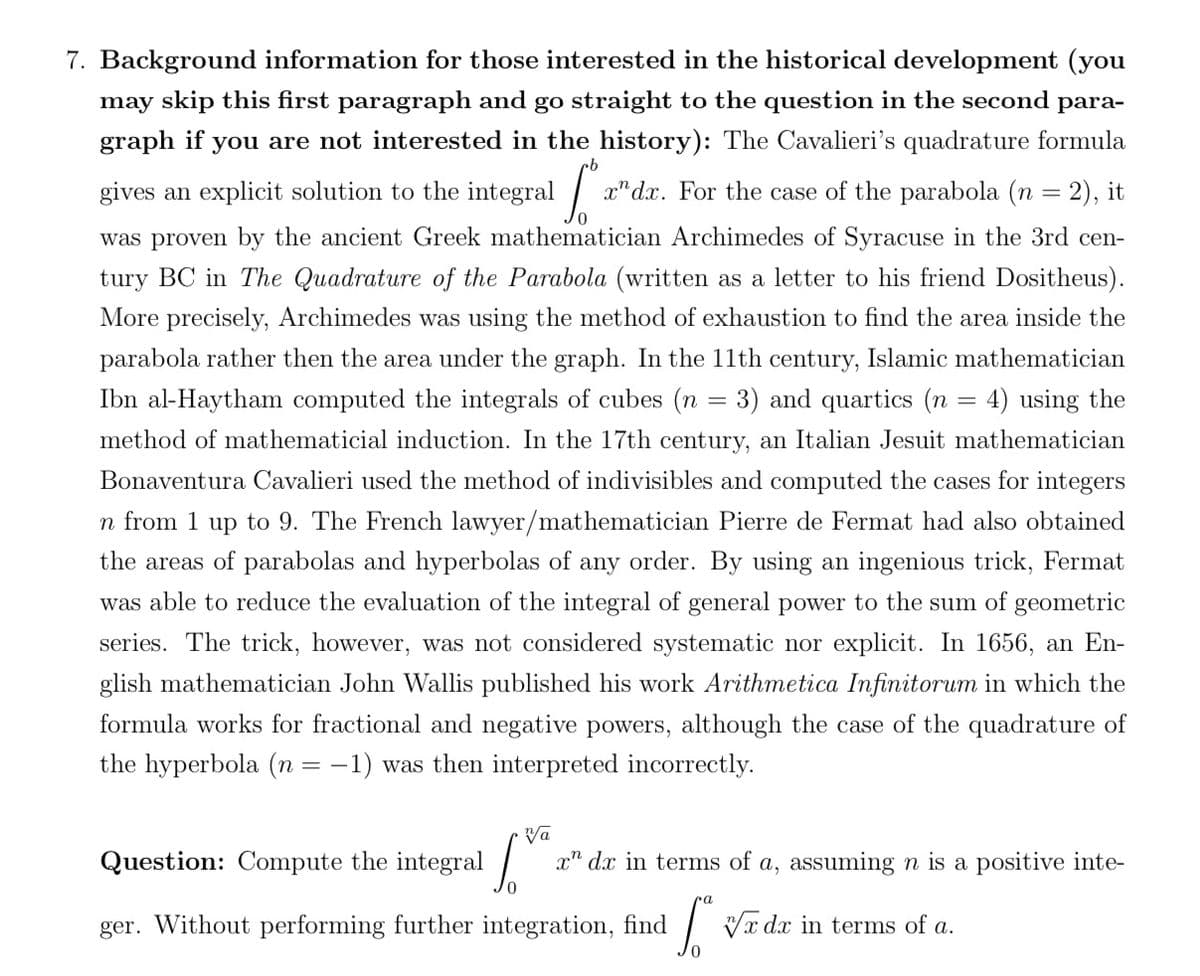Va Question: Compute the integral / x" d.x in terms of a, assuming n is a positive inte- ger. Without performing further integration, find Vx dx in terms of a.
Va Question: Compute the integral / x" d.x in terms of a, assuming n is a positive inte- ger. Without performing further integration, find Vx dx in terms of a.
Algebra & Trigonometry with Analytic Geometry
13th Edition
ISBN:9781133382119
Author:Swokowski
Publisher:Swokowski
Chapter11: Topics From Analytic Geometry
Section11.1: Parabolas
Problem 34E
Related questions
Concept explainers
Riemann Sum
Riemann Sums is a special type of approximation of the area under a curve by dividing it into multiple simple shapes like rectangles or trapezoids and is used in integrals when finite sums are involved. Figuring out the area of a curve is complex hence this method makes it simple. Usually, we take the help of different integration methods for this purpose. This is one of the major parts of integral calculus.
Riemann Integral
Bernhard Riemann's integral was the first systematic description of the integral of a function on an interval in the branch of mathematics known as real analysis.
Question

Transcribed Image Text:7. Background information for those interested in the historical development (you
may skip this first paragraph and go straight to the question in the second para-
graph if you are not interested in the history): The Cavalieri's quadrature formula
gives an explicit solution to the integral
x" dx. For the case of the parabola (n = 2), it
was proven by the ancient Greek mathematician Archimedes of Syracuse in the 3rd cen-
tury BC in The Quadrature of the Parabola (written as a letter to his friend Dositheus).
More precisely, Archimedes was using the method of exhaustion to find the area inside the
parabola rather then the area under the graph. In the 11th century, Islamic mathematician
Ibn al-Haytham computed the integrals of cubes (n = 3) and quartics (n = 4) using the
method of mathematicial induction. In the 17th century, an Italian Jesuit mathematician
Bonaventura Cavalieri used the method of indivisibles and computed the cases for integers
n from 1 up to 9. The French lawyer/mathematician Pierre de Fermat had also obtained
the areas of parabolas and hyperbolas of any order. By using an ingenious trick, Fermat
was able to reduce the evaluation of the integral of general power to the sum of geometric
series. The trick, however, was not considered systematic nor explicit. In 1656, an En-
glish mathematician John Wallis published his work Arithmetica Infinitorum in which the
formula works for fractional and negative powers, although the case of the quadrature of
the hyperbola (n = -1) was then interpreted incorrectly.
Vā
Question: Compute the integral |
x" dx in terms of a, assuming n is a positive inte-
ger. Without performing further integration, find
Vx dx in terms of a.
Expert Solution
This question has been solved!
Explore an expertly crafted, step-by-step solution for a thorough understanding of key concepts.
Step by step
Solved in 2 steps with 1 images

Knowledge Booster
Learn more about
Need a deep-dive on the concept behind this application? Look no further. Learn more about this topic, calculus and related others by exploring similar questions and additional content below.Recommended textbooks for you

Algebra & Trigonometry with Analytic Geometry
Algebra
ISBN:
9781133382119
Author:
Swokowski
Publisher:
Cengage

Algebra & Trigonometry with Analytic Geometry
Algebra
ISBN:
9781133382119
Author:
Swokowski
Publisher:
Cengage